10+ Times People Accidentally Screwed Up, and It Was Dramatic

In 1991, somewhere in the lush jungles of central Vietnam, a local logger found a mysterious hole among the foliage and bushes. He looked in there and felt a strong wind blowing into his face. Then, he heard a strange sound from the cave depths and realized that it was the sound of a river. The logger didn’t check the cave but decided to go back there with a flashlight and a rope. When he returned, he couldn’t find the cave anywhere. He spent a few years searching for it. Finally, in the 2000s, the logger managed to locate it again. In 2009, he brought scientists to this place. They found out the cave, called Son Doong [sn don], is the largest in the world.
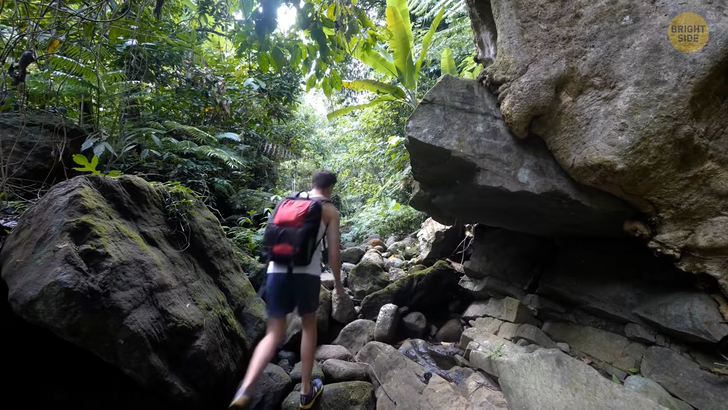
There is so much space here that you will hear a long echo if you shout. Son Doong’s main passage reaches 660 feet [660 ft (200 m)] in height in some places, which is more than half as tall as the Empire State Building. The area of the cave is so huge that an entire New York City block with 40-story skyscrapers would fit in there. There is a deep underground labyrinth under the jungles of Vietnam, hiding three of the largest caves in the world. And Son Doong is number 1 on this list. The vast space inside is filled with various plants, unique microclimates, and different landscapes. There is a real jungle growing underground. It became possible thanks to the collapsed ceiling in some places. It lets sunlight penetrate there from above.
There are huge stalactites 250 feet [250 ft (76 m)] high on the ceilings and walls, which is more than the length of a passenger Boeing. They’ve been here between hundreds of thousands and millions of years. Some limestone deposits are more than 450 million years old! It means they’ve existed since the time long before dinosaurs. Besides the jungle, there are also many rivers in the cave. They were formed because of rainwater coming down from holes in the ceiling. These rivers are smooth and fast, like slides in a water park. But riding them isn’t the best idea since they can carry you into one of those long labyrinths the cave is full of. And we still don’t know where they’re going. You may find yourself in another unknown part of the cave. This is what happened in 2018. Three divers accidentally discovered new areas in Son Doong. The cave turned out to be much bigger than everyone thought.
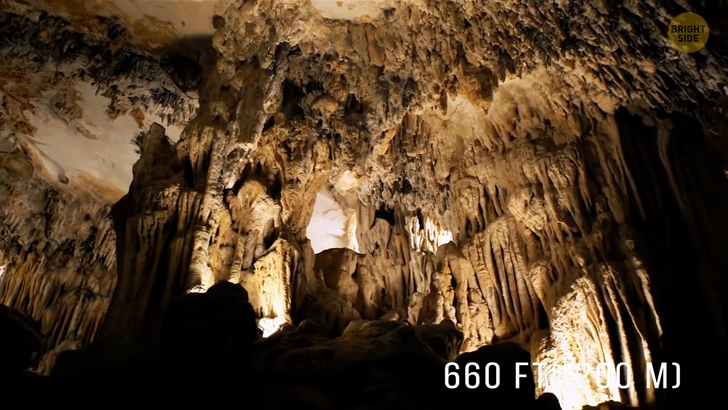
They dove into one of the cave’s lakes and reached a depth of 256 feet [256 ft (78 m)]. At the bottom, they found a separate tunnel. Divers lowered a fishing line with a lead weight there and found out that this place reaches a depth of 394 feet [394 ft (120 m)] . And the tunnel is more than half a mile long. We still don’t know the exact size of the tunnel. Son Doong also connects to another huge cave. There are a lot of things you can see in Son Doong besides underground labyrinths and rivers. You can find spacious rooms with lakes, and you can walk for hours along dark mountain corridors. This place is strikingly beautiful but dangerous at the same time. And the coolest thing is that you can take a walk here. Since 2013, Son Doong Cave has been opened to tourists. It’s not just an easy walk to take some selfies, though. The expedition to the cave lasts for several days.
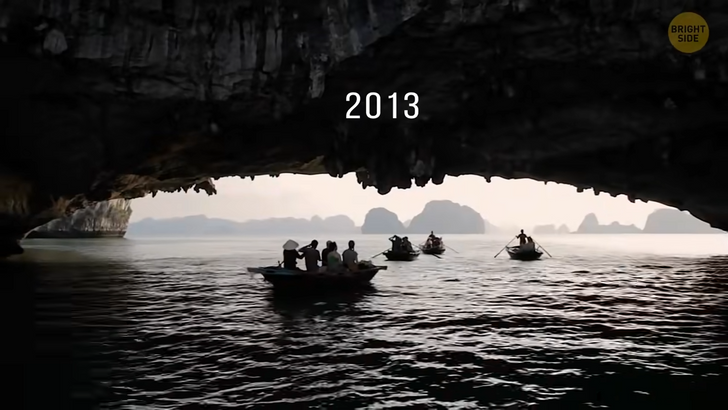
For the first day and a half, you’ll explore the third-largest cave in the world. And only after that, you’ll reach Son Doong. The path will take you through rivers, dense jungles, mountains, and rocks. You can meet many exotic birds, monkeys, and other animals. And according to many people, the way to the cave is even more impressive than the cave itself. When you reach your destination, you’ll spend the next few days exploring Son Doong.
Together with other tourists, professional guides, and porters, you’ll be sleeping in tents in different places in the cave every day. You’ll see some stunning landscapes and, get ready for this, 400 million-year-old majestic fossils. There are also dark rooms with lakes that are good for swimming. Such adventurous expeditions become more popular every year. People who’ve visited the cave call it the most amazing place they’ve ever seen.
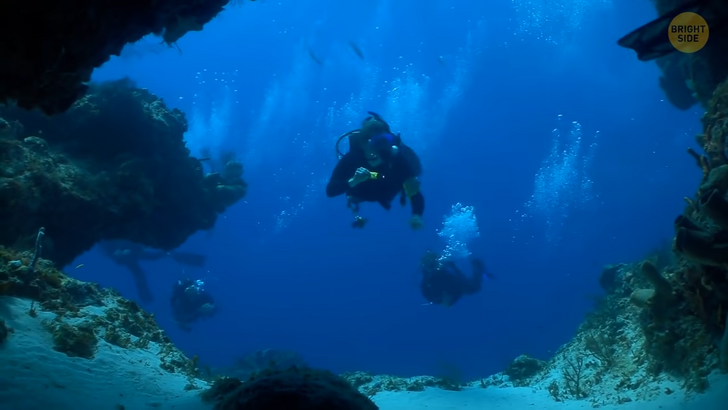
Another amazing cave is located in Indonesia, on the island of Flores. It’s quite small but holds amazing things inside. In 2003, a group of scientists discovered ancient artifacts here, including fossils of primitive tools, such as sharpened stones. Scientists realized that hundreds of thousands of years ago, this place was home to our distant ancestors. Then, they found a very unusual female skeleton. That woman was only 3.5 [3.5 ft (1 m)] feet tall. This is the height of the waistline of an average adult person. That woman had no problems with her spine or with the development of her bones, though. This and other skeletons found in the cave belonged to some unknown human ancestors. Scientists called this species homo Floresiensis (Flo-ren-ci-an-sis) or simply — Hobbit. The woman’s weight was about 35 to 79 pounds. Analysis of the skull and bones showed she was about 30 years old.
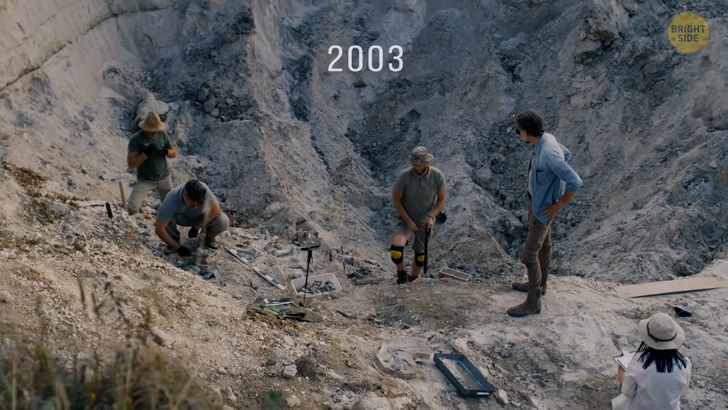
Hobbits probably lived on Earth between 190,000 and 50,000 years ago. There’s a chance they met the ancestors of modern humans. The next cave is in Turkey. Imagine you live in an old house and decide to make some repairs. You throw all the old stuff out of the rooms. The last place to sort out is your basement. You’ve hardly ever visited it and have no idea what’s hidden there. But, it’s pretty spacious, so you decide to turn it into a room. You tear down the wall and discover the entrance to the cave. This is a tunnel that leads underground. You walk through the cave and see a real underground city!
This happened in Turkey in 1963. One of the locals discovered a secret passage to a lost city in his basement. About 20,000 thousand people could live there. There was enough space for livestock and food supplies. It’s not just a maze of tunnels. There’s a chapel, a school, stables, kitchens, walls, and other signs of civilisation. The city was built in the Byzantine era in the years 780-1180. It’s not the only one down there and is connected to many underground tunnels and towns that stretch for several miles. Let’s finish our journey in the strangest and most frightening cave. We’re going to the southeast of Romania, near the Black Sea. Here, on a desolate wide plain, you can find a hole. This is a tunnel leading deep underground.
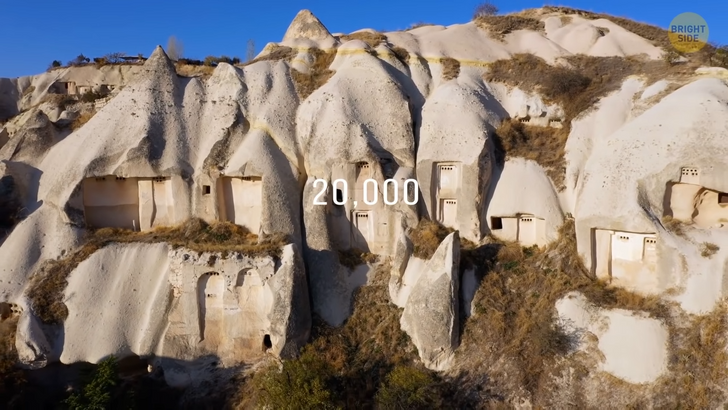
The air inside the cave has high levels of hydrogen sulfide and carbon dioxide. Under normal conditions, the air we breathe contains around 20% oxygen, but it’s only 10% here. You won’t be able to breathe freely without an oxygen tank. The water and air here are poisoned. Almost no animals are able to live in such conditions. At least the ones we know about. And this cave is filled with 48 species of living organisms, 33 of which are new unknown species.
Creeping things that live here can scare you, especially if you’re afraid of bugs. Strange white snails and white spiders are crawling along the walls. An unknown species of leeches and transparent shrimp are swimming in the water. White millipedes with huge mustaches are creeping on the ground. Here you can also meet an unknown kind of scorpion with a transparent white body that doesn’t look like any other kind of scorpion.
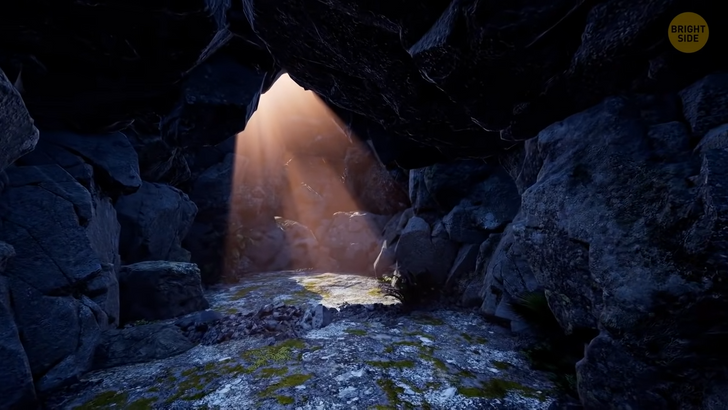
Nothing here looks like ordinary animals at all. All creatures in the cave are white or transparent. They don’t have eyes, but they have long paws and antennae-whiskers that help to navigate in space. Plants can’t live here without sunlight and clean air. This means that oxygen isn’t produced in this place. So, how did these creatures manage to survive? The answer is in the water! The surface of the lake and puddles here is covered with strangely moving foam. This substance is a living organism. It consists of a billion bacteria called autotrophs. Ordinary plants absorb carbon dioxide and use photosynthesis to produce oxygen.
This cave is filled with carbon dioxide. Autotrophs absorb it and secrete tiny food particles. Bacteria feed on these particles. Larger organisms then feed on those bacteria. And so on. In the end, there is enough food for everyone. This process is called chemosynthesis [ki-mo-sin-the-sis]. It’s like photosynthesis but uses water instead of sunlight in chemical reactions. In this cave, evolution has created a completely unique biological system separate from the rest of the world.











